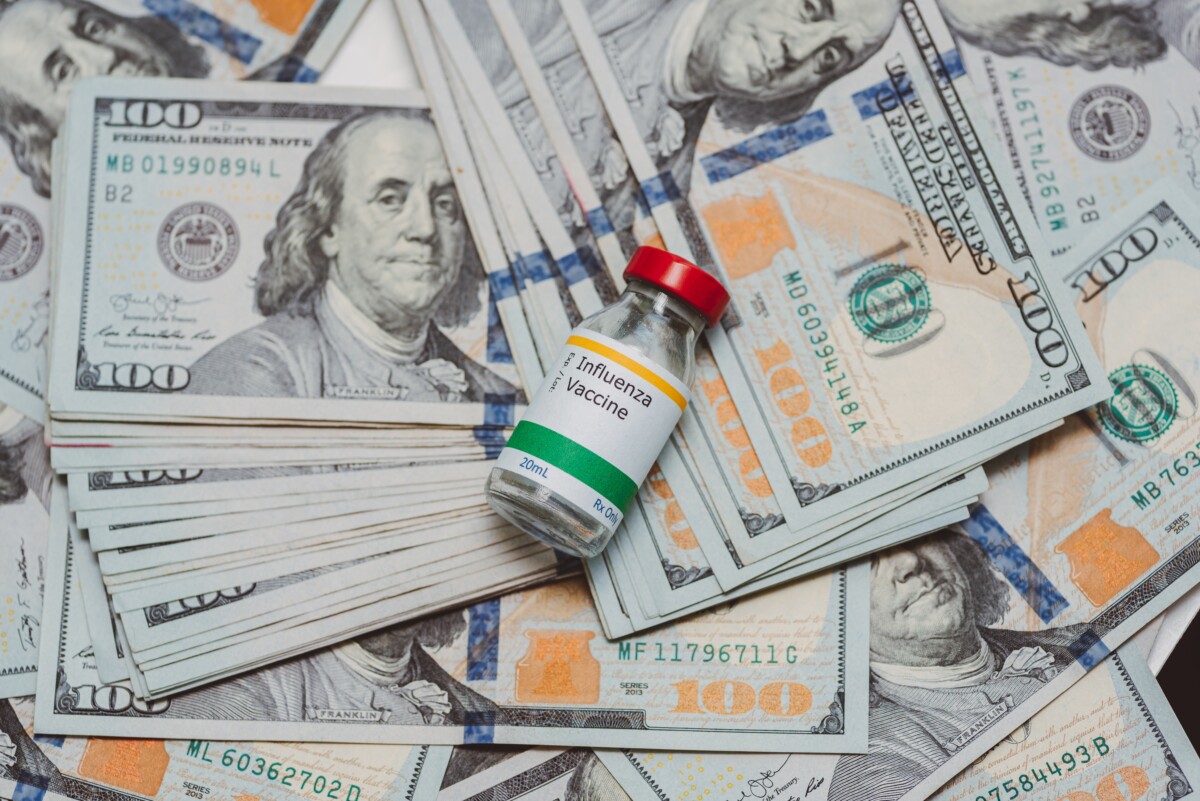Medicare Part D $2000 Cap 2025 Explained: Your Guide to Savings
[tta_listen_btn]
The Medicare Part D $2000 cap 2025 is a crucial change in prescription drug coverage for Medicare beneficiaries, aimed at reducing out-of-pocket expenses for seniors and individuals with disabilities. Set to take effect in 2025, this cap addresses the rising costs of medications, providing a financial safety net for those reliant on Medicare for their prescriptions.
Understanding the Medicare Part D $2000 Cap 2025
This cap limits annual out-of-pocket costs for beneficiaries to $2000, meaning once they reach this threshold, they will not pay for prescriptions for the rest of the year. This change enhances access to necessary medications, especially for individuals with chronic conditions requiring multiple prescriptions.
Implementation and Impact
- Phased Implementation: The cap will be introduced gradually, allowing for adjustments by beneficiaries and providers.
- Plan Adjustments: Medicare Part D plans will revise their coverage and pricing strategies, potentially leading to lower premiums as overall medication costs are managed more effectively.
Key Benefits of the $2000 Cap
The Medicare Part D $2000 cap 2025 is a crucial change in prescription drug coverage for Medicare beneficiaries. Starting in 2025, this cap will limit out-of-pocket expenses for those enrolled in Medicare Part D plans, providing essential financial relief for seniors managing chronic conditions that require costly medications.
Affordability and Financial Relief
- Once beneficiaries reach the $2000 threshold, they will no longer pay for medications for the rest of the year, offering a predictable limit on drug spending. Nearly 1.2 million Medicare beneficiaries are expected to benefit, significantly easing their financial burden.
Improved Access to Medications
- The cap encourages adherence to prescribed medication regimens, as beneficiaries are less likely to skip doses due to high costs. Improved adherence can lead to better health outcomes and reduced hospitalizations.
Encouragement for Plan Competition
- The $2000 cap is anticipated to promote competition among Medicare Part D plans, incentivizing insurers to offer better coverage options and lower premiums, ultimately benefiting consumers with more choices and value.
Call the official Medicare helpline at 1-800-MEDICARE (1-800-633-4227) to ask your questions or get more information.
Impact on Prescription Drug Costs
The Medicare Part D $2000 cap 2025 represents a crucial advancement in prescription drug coverage for Medicare beneficiaries. This cap is intended to limit out-of-pocket expenses, making essential medications more affordable for millions of seniors and individuals with disabilities. As healthcare costs rise, this initiative aims to provide financial relief and improve access to necessary prescriptions.
Understanding the Impact on Prescription Drug Costs
The $2000 cap will significantly affect how beneficiaries manage their medication expenses, particularly those with chronic conditions requiring multiple prescriptions.
Reduction in Out-of-Pocket Expenses
- Once beneficiaries reach the $2000 threshold, they will no longer pay out-of-pocket for medications, marking a major shift from previous systems.
- Approximately 1.4 million Medicare beneficiaries are expected to benefit, alleviating their financial burden.
Increased Access to Medications
- The cap may encourage beneficiaries to fill prescriptions, improving health outcomes and adherence rates.
- Nearly 30% of seniors have reported skipping medications due to high costs, a problem the cap seeks to address.
Potential Changes in Plan Offerings
- Insurance providers may adjust their Medicare Part D plans, leading to more competitive pricing and better coverage options. Beneficiaries should review their plans annually to ensure optimal coverage under the new cap.
Eligibility Criteria for Medicare Part D
The Medicare Part D $2000 cap 2025 is a crucial advancement in prescription drug coverage, aimed at reducing out-of-pocket costs for seniors and individuals with disabilities. Understanding the eligibility criteria is essential for potential beneficiaries.
Who Can Enroll?
- Age Requirement: Individuals must be 65 or older, though younger individuals with certain disabilities may qualify.
- Medicare Enrollment: Enrollment in Medicare Part A and/or Part B is necessary to access Part D coverage.
- Residency: Beneficiaries must be U.S. citizens or legal residents.
- No Income Restrictions: There are no income limits for eligibility, but higher earners may face increased premiums.
Enrollment Periods
- Initial Enrollment Period (IEP): A seven-month window around your 65th birthday.
- Annual Enrollment Period (AEP): From October 15 to December 7 each year, beneficiaries can enroll or switch plans.
- Special Enrollment Periods (SEPs): Certain life events may allow enrollment outside regular periods.
Plan Options
- Stand-Alone Plans: These complement original Medicare.
- Medicare Advantage Plans: Some include Part D coverage.
- Variety of Plans: Numerous options exist, making it vital to compare plans for the best fit.
How the $2000 Cap Affects Seniors
The Medicare Part D $2000 cap 2025 represents a significant shift in prescription drug coverage for seniors, aiming to limit out-of-pocket expenses and provide relief for those facing high medication costs. This cap, effective in 2025, is crucial for influencing seniors’ healthcare decisions and financial planning.
Lower Out-of-Pocket Costs
The cap reduces out-of-pocket expenses, meaning once beneficiaries reach $2000 in drug costs, they won’t pay for medications out of pocket. This is especially beneficial for seniors with chronic conditions.
- Financial Relief: Seniors can save on annual medication costs, allowing for better allocation of funds.
- Budgeting Ease: The cap helps seniors plan their healthcare budgets, reducing financial stress.
Increased Access to Medications
The cap facilitates easier access to necessary medications without fear of high costs.
- Improved Adherence: Lower costs lead to better adherence to treatments.
- Broader Medication Choices: Seniors may choose more effective medications previously avoided due to cost.
Potential Challenges
Despite its benefits, challenges remain, such as initial costs and variability in Medicare Part D plans, which may confuse beneficiaries.
In summary, the Medicare Part D $2000 cap 2025 aims to ease the financial burden on seniors, enabling informed healthcare decisions.
Comparative Analysis with Previous Caps
The Medicare Part D $2000 cap 2025 is a crucial advancement in prescription drug coverage for Medicare beneficiaries, aimed at limiting out-of-pocket expenses for seniors and individuals with disabilities. This cap is particularly significant as healthcare costs rise, easing the financial burden on those reliant on Medicare for medications.
Historical Context of Medicare Part D Caps
- Before the $2000 cap, beneficiaries faced escalating costs without a defined limit, often exceeding $5,000 annually.
- The 2025 cap marks a pivotal policy shift towards more predictable expenses for Medicare Part D enrollees.
Impact on Beneficiaries
- Financial Relief: The cap is expected to provide substantial relief to millions struggling with high drug costs.
- Increased Access: Beneficiaries may be more likely to fill prescriptions they previously avoided due to cost concerns.
- Statistical Insight: Nearly 1 in 4 enrollees reported not filling prescriptions due to cost, a statistic the cap could significantly reduce.
Comparison with Previous Legislation
- The $2000 cap aligns with legislative efforts to reform Medicare, making it more affordable and appealing to new enrollees.
Future Implications of the $2000 Cap
The Medicare Part D $2000 cap 2025 is a pivotal change in prescription drug coverage for Medicare beneficiaries, aimed at limiting out-of-pocket expenses for seniors and individuals with disabilities. Understanding its future implications is essential for both beneficiaries and healthcare providers.
Impact on Out-of-Pocket Costs
- The cap will significantly reduce the financial burden on Medicare Part D enrollees, with nearly 1.2 million beneficiaries expected to benefit, especially those with chronic conditions needing costly medications.
Changes in Prescription Drug Plans
- Insurance providers may modify their plans to align with the new cap, affecting premiums and coverage options. Beneficiaries should review their plans annually to ensure optimal coverage and stay updated on any changes in drug formularies.
Encouragement of Preventive Care
- Lower out-of-pocket costs may encourage beneficiaries to seek preventive care and regular check-ups, leading to better health outcomes and potentially reducing the need for expensive treatments. This aligns with broader healthcare goals of improving health and reducing long-term costs.
FAQs – Medicare Part D $2000 Cap 2025
1. How much will the Medicare Part D premiums be in 2025?
The average monthly premium for Medicare Part D in 2025 is expected to be around $46.50, which is a slight decrease from previous years.
2. Is the Medicare $2000 cap still in effect?
Yes. The $2,000 out-of-pocket cap for Medicare Part D prescription drug costs is in effect for 2025. After reaching this limit, beneficiaries pay nothing for covered prescriptions for the rest of the year.
3. How is Medicare changing in 2025 for seniors?
Key changes include lower Part D premiums, the implementation of the $2,000 out-of-pocket cap on prescription drugs, elimination of the coverage gap (donut hole), and the introduction of options to pay prescription costs in monthly installments.
Final Thoughts
The introduction of the $2,000 out-of-pocket cap is a major improvement for seniors, helping to reduce the financial burden of prescription drugs. With premiums decreasing and more predictable costs, 2025 is shaping up to be a better year for Medicare Part D enrollees. It’s important to review your plan options each year to ensure your medications are covered and to make the most of new benefits available.
Don’t miss out on better benefits. Your free Medicare quote is waiting at NewMedicare.com or 📞 (833) 203-6742.






